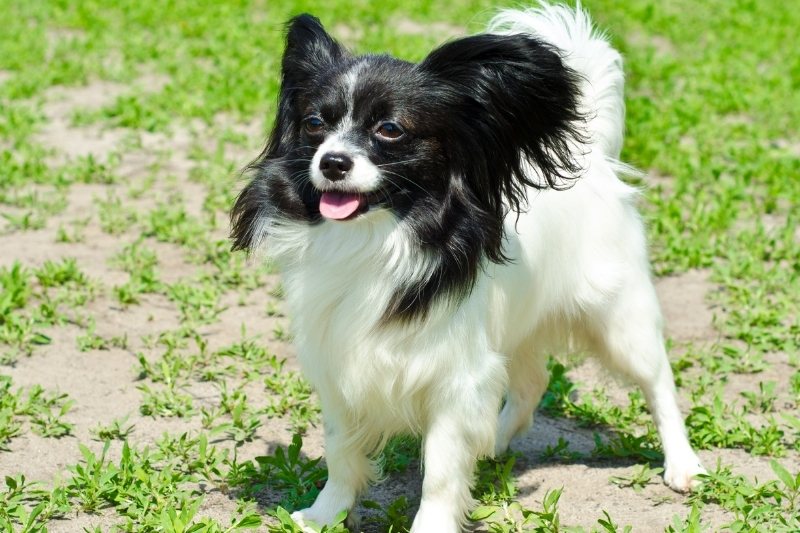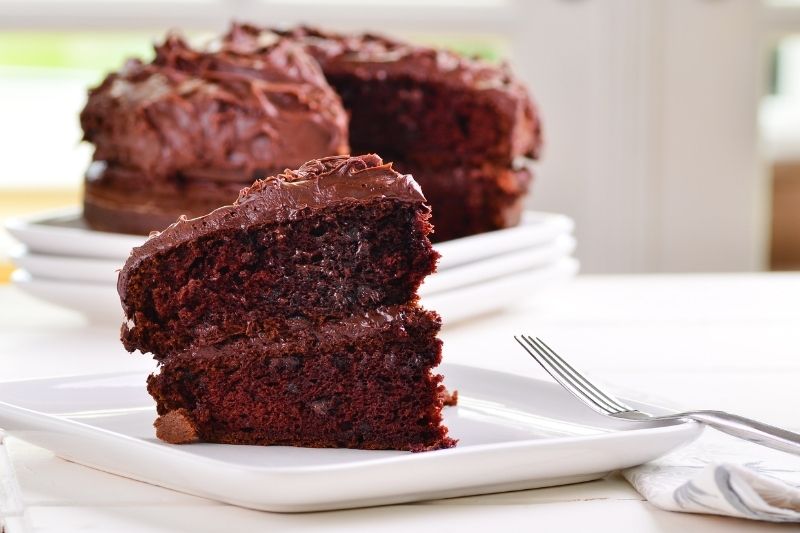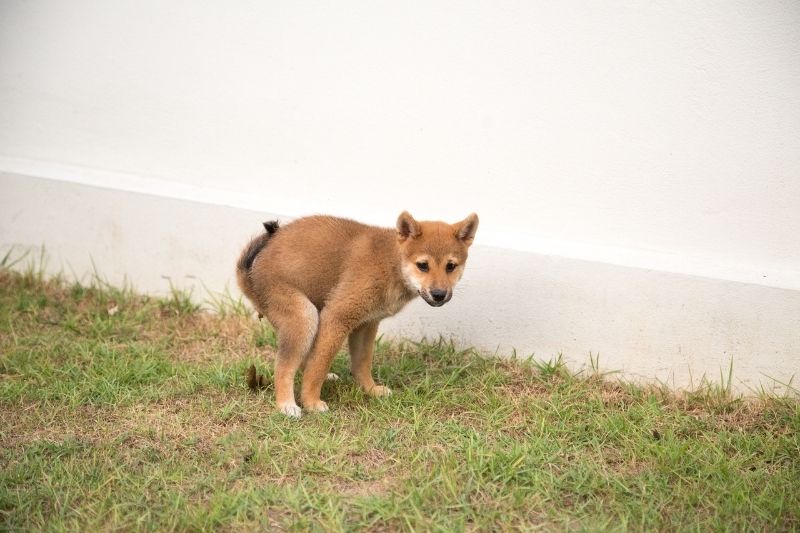Do Papillons shed? – the cost of long, luxurious fur

We bet there are some dog parents that choose their canine companions by looking at their coat type. This is necessary for those with allergies, and of course, it does impact how often you have to vacuum up stray hairs.
Long coats are usually associated with excessive cleanup, but that isn’t always the case, and the Papillon breed is an excellent example of this. French for butterfly, the papillon breed is named for their wing-like ears, which resemble butterfly wings.
There isn’t really a dog breed that truly doesn’t shed, so you can rule out that thought right away. However, the amount of shedding is what concerns many pet parents, so we will take a look at the stigma-defying papillon.
Papillon Puppy Shedding
Puppies of every dog breed are born with a puppy coat. The puppy coat is distinctly different from the adult coat in terms of color, thickness, length, and texture.
Generally, puppy fur is usually darker, not as thick or long, and softer than adult fur. You will start noticing more shedding when your papillon is around 7 to 8 months old because that’s when the adult fur comes in.
This process is a very interesting one because you can see some major changes in your fur baby’s appearance. You may see some areas with shorter fur and others with longer lengths and around 12 to 15 months is when you will have a good idea of how your pup will permanently look.
How Much Do Adult Papillons Shed?

The puppy stage is largely the same for all dog breeds, but adulthood is what sets each one apart. As single-coated dogs, papillons shed pretty lightly, which is surprising judging by their appearance. It’s the double-coated breeds such as the Pomeranian and the Siberian husky that have excessive seasonal shedding.
Of course, there are factors that determine the amount of shedding such as the diet, your dog’s health, and even the climate. Dogs are very versatile creatures and their bodies can adapt to the environment quite well.
For example, a papillon dog raised in a warm tropical climate could have a slightly thinner and shorter coat compared to one raised in primarily cold weather. It really depends on the dog.
You may notice seasonal shedding twice a year where the amount is moderate, but throughout the year you’ll notice light shedding and it won’t require much cleanup.
Papillon Hair Growth Cycle

Shedding is a good thing for dogs because they are dropping dead hairs and replacing them with new ones or just thinning out the coat in anticipation of warm weather.
Shedding is a completely normal occurrence in animals, but if you notice chunks of hair falling out and nothing growing in its place, or rashes and hot spots, then the hair loss could be due to an allergy or skin issue. If this is the case, we would suggest scheduling a vet visit.
Seasonal shedding usually happens in the spring and fall, the seasons before the real hot and cold climate hits. If your dog is mostly an indoor dog, then you won’t see very noticeable seasonal shedding and just see light shedding all year round.
Is My Papillon Hypoallergenic?
Dogs that are considered hypoallergenic are just ones that have less dander, drier coats, and don’t shed as much. However, there are people allergic to other thighs such as a dog’s saliva, which then means there really isn't a dog that won’t trigger allergies for them.
There are no truly 100% hypoallergenic breeds, just ones that are less likely to set off your allergies than others. Since papillons don’t shed as much as some other breeds, they are a more suitable choice for those who want a less “allergic” dog.
Papillon Shedding – Management Tips

Let’s say you are one of those pet parents that are allergic to your beloved companion. Is there anything you can do to manage the shedding? Yes, there is! And we’ll tell you how.
It starts with the diet
As we mentioned, your dog’s skin and coat health is a great determiner of shedding amount and frequency. Your dog’s health, regardless of which part, starts with the diet. The food you feed your dog will have a great impact on how the coat looks and how sensitive the skin is.
For example, if you have an allergic dog, you can try tailoring its food from puppyhood. Find the best grain-free food for puppies and you will notice a difference. Of course, you should ask your vet if your dog is indeed allergic to grains first, or perhaps it’s a type of protein allergy. There are even dogs allergic to something in the environment, which can also impact skin and coat health.
Bathing and Grooming
A way to reduce the amount of shedding in any dog is to groom and bathe them frequently (but not too much). During the wash, loose hairs will be washed out, leaving behind a healthy coat.
We would suggest using high-quality shampoo and maybe even think about a dog conditioner to moisturize those silky locks. If your papillon is a puppy, then use special puppy shampoo because they have a milder formulation and is gentler on the eyes and skin.
There is also no better way to trap loose fur than with regular grooming sessions. Find the right brush for your papillon and give it a once-over every other day. Not only will the brushing get rid of dead hair, but the nubs on the brush and the movement will stimulate blood flow under the skin that triggers healthy hair growth. You also help spread the natural oils on your dog’s fur throughout its coat.
Help with Supplements
Other than feeding your dog the right food, you can add supplements to its meal to help support skin and coat health. Omega fatty acids (3 and 6) are excellent for silky locks and they also have a secondary benefit, which is supporting joint health. You can find supplements at your local pet store or consult with your vet to get a recommendation.
You can also choose to switch up your dog’s food and go for fish protein rather than beef as a recipe that is rich in fish will have an abundant amount of fish oil and fatty acids necessary for a healthy coat.
Final Thoughts
The Papillon is a dog breed that possesses a gorgeous and flowy coat without the downside of excessive shedding. There are life factors that can impact the shedding frequency, from the climate, which you cannot control, to something you have full control of – regular grooming. We hope our tips can help all papillon parents and parents of other dog breeds manage the shedding.

DogsPlanet.com is one of the main websites for dog owners, future owners and dog lovers. Our team of authors seeks to answer the questions that you frequently ask yourselves.








